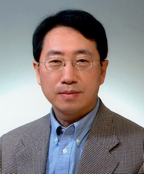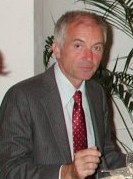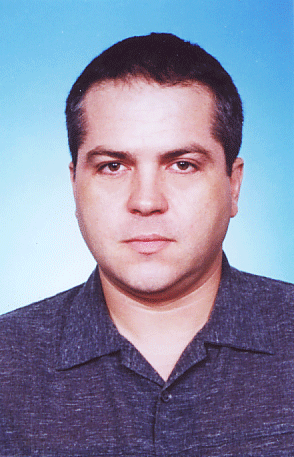Keynote Speakers
Technology Solutions to the Negative Side Effects of the Internet
Prof. Won Kim |
 |
Abstract
Although the Internet and Web have changed the world for the better for the most part, they have also brought about considerable negative side effects. The latter includes spam, malware dissemination, hacking, denial of service attacks, digital piracy, etc. Various technological solutions have been created to keep these these negative side effects under control. However, the solutions have been quickly defeated, and both technological and non-technological efforts are in a perpetual catch-up mode. In this talk, I will examine status and directions of the technological solutions against a range of negative side effects of the Internet and Web.
Short BiographyWon Kim is currently a lifetime professor and IT vice president at the Kyungwon University in S. Korea. He is also a senior advisor with Xener Systems, Inc. in Seoul, S. Korea. He received a Ph.D. in computer science from the University of Illinois at Urbana-Champaign. He received a B.S. and M.S. from the Massachusetts Institute of Technology. He is best-known as one of the pioneers of object-oriented and object-relational database technologies. He led the ORION object-oriented database systems project at MCC, Austin, Texas in the late 1980s. He founded UniSQL and created the world's first commercial object-relational database system in the early 1990s. On the side, he founded and served as Chair of ACM's SIGKDD data mining society, and as Editor-in-Chief of ACM's Transactions on Internet Technology journal. He also served as Chair of ACM's SIGMOD data management society, and as Editor-in-Chief of ACM's Transactions on Database Systems. He is an ACM Fellow, and received such awards as ACM's Distinguished Services Award, ACM SIGMOD Test of Time Research Award, VLDB Ten Year Best Paper Award, etc. His current research umbrella is social computing architecture, which includes such subjects as social Web sites, Internet search engine architecture, Web mining, cloud computing, networked embedded systems, and HCI usability.
Pervasive Computing in the Large: Socio-Technical Fabric
Prof. Dr. Alois Ferscha
Pervasive Computing Institute
Johannes Kepler University Linz, Austria
Email: ferscha_AT_soft.uni-linz.ac.at
Abstract
Trends in miniaturizing of technology (modern microelectronics, system-on-chip technologies, ultra compact memory systems, Micro-mechanics, Nano-devices) and exponential growth and globalization of communication infrastructures have opened an unexpectedly wide terrain for ICT research in general, and Pervasive Computing in particular.The first generation of ICT aiming towards autonomic systems and their adaptation was driven by the availability of technology to connect literally everything to everything (Connectedness, 1991-2005). Networks of ICT systems emerged, forming communication clouds of miniaturized, cheap, fast, powerful, wirelessly connected, “always on” systems, enabled by the massive availability of miniaturized computing, storage, communication, and embedded systems technologies. Special purpose computing and information appliances, ready to spontaneously communicate with one another, sensor-actuator systems to in-vert the roles of interaction from human to machine (implicit interaction), and organism like capabilities (self-configuration, self-healing, self-optimizing, self-protecting) characterize the ICT in this generation.
The second generation of autonomic ICT inherited from upcoming context re-cognition and knowledge processing technologies (Awareness, 2000-2007), e.g. Situation Aware, Self-Aware, Context-Aware, Energy-Aware, etc., reframing autonomy to be based on knowledge, extracted from low level sensor data captured in a particular situation or over long periods of time (The respective “epoch” of research on “context aware” systems was stimulated and fertilized by the PhD work of Anind Dey (Dey 2000), introducing the term “context”: “…is any information that can be used to characterize the situation of an entity. An entity is a person, place, or object that is considered relevant to the inter-action between a user and an application, including the user and application themselves."). One result out of this course of research are autonomic elements, able to capture context, to build up, represent and carry knowledge, to self-describe, -manage, and –organize with respect to the environment, and to exhibit behaviour grounded on “knowledge based” monitoring, analyzing, planning and executing were proposed, shaping ecologies of ICT systems, built from collective autonomic elements interacting in spontaneous spatial/temporal contexts, based on proximity, priority, privileges, capabilities, interests, offerings, environmental conditions, etc.
Finally, a third generation of autonomic ICT is approaching, building upon connectedness and awareness, and attempting to exploit the (ontological) semantics of systems, services and interactions (i.e. giving meaning to situations and actions). Such systems are often referred to as highly complex, orchestrated, cooperative and coordinated “Ensembles of Digital Artifacts” (FP7 FET). An essential aspect of such an ensemble is its spontaneous configuration towards a complex system, i.e. a "... dynamic network of many agents (which may re-present cells, species, individuals, nations) acting in parallel, constantly acting and reacting to what the other agents are doing where the control tends to be highly dispersed and decentralized, and if there is to be any coherent behavior in the system, it has to arise from competition and cooperation among the agents, so that the overall behavior of the system is the result of a huge number of decisions made every moment by many individual agents." (Castellani, B., Haerty, F.W., 2009). Ensembles of digital artifacts as compounds of huge numbers of possibly heterogeneous entities constitute a future generation ICT to which we refer to as Sociotechnical Fabric, since they pose challenges both in the technological as well as in the societal dimension (1012 -1013 “things” or “goods” traded in markets; 109humans; 109 nodes on the internet, mobile phones, cars, digital cameras, etc. on planet, mega-cities with 109 citizens, 108 users on Facebook, 108 videos on YouTube, 108 titles on last.fm, etc.)
Short BiographyAlois Ferscha was with the Department of Applied Computer Science at the University of Vienna at the levels of assistant and associate professor (1986-1999). In 2000 he joined the University of Linz as full professor where he heads the Excellence Initiative “Pervasive Computing”, the department of Pervasive Computing, the Research Studio Pervasive Computing Applications and RIPE (Research Institute of Pervasive Computing).
Currently he is focused on Pervasive and Ubiquitous Computing, Networked Embedded Sy-stems, Embedded Software Systems, Wireless Communication, Multiuser Cooperation, Distributed Interaction and Distributed Interactive Simulation. He has lead international EU funded projects (EU FP7, FET: SAPERE, HC2, PANORAMA, SOCIONICAL, OPPORTUNITY; EU FP6, FET: BeyondTheHorizon, InterLink, CRUISE), but also national projects (DISPLAYS, SPECTACLES, PowerSaver, WirelessCampus, MobiLearn) research, and holds tight cooperation with indus-trial stakeholders (SIEMENS Project FACT, IBM Project VRIO). SPECTACLES (Autonomous Wearable Display Systems) in cooperation with Silhouette International, INSTAR (Information and Navigation Systems Through Augmented Reality) (2001-2003), Siemens München, AG, CT-SE-1, BISANTE, EU/IST, Broadband Integrated Satellite Network Traffic Evaluation (1999-2001), Peer-to-Peer Coordination (2001– ), Siemens München, AG, CT-SE-2, Context Framework for Mobile User Applications (2001– ), Siemens München, AG, CT-SE-2, WebWall, Communication via Public Community Displays, Connect Austria (2001-2002), VRIO, Virtual Reality I/O, with GUP JKU, IBM Upper Austria (2002-2003), MobiLearn, Computer Science Any-Time Any-Where, (2002-2004), Mobile Sports Community Services, (SMS Real Time Notification at Vienna City Marathon 1999, 2000, 2001, 2002; Berlin Marathon 2000, 2001, 2002), etc. Ferscha has published more than 150 technical papers on topics related to pervasive and distributed computing.
He has served on editorial boards of renowned international scientific journals (e.g. Pervasive and Mobile Computing (Elsevier), Transactions of the Society for Computer Simulation), on steering and programme committees of several conferences like PERVASIVE, UMBICOMP, ISWC, WWW, PADS, DIS-RT, SIGMETRICS, MASCOTS, MSWiM, MobiWac, TOOLS, Euro-Par, PNPM, ICS, etc. to name a few. His activities and recognition in the Pervasive Computing and Wearable Computing research communities is expressed by e.g. his chairing PERVASIVE 2004 (Program Chair), and ISWC’09 (General Chair). In the parallel and distributed simulation community he e.g. served as the General Chair of the IEEE/ACM/SCS 11th Workshop on Parallel and Distributed Simulation (PADS’97), as Program Committee chair for the PADS’98, Pro-gram Chair for the Seventh International Symposium on Modeling, Analysis and Simulation of Computer and Telecommunication Systems (MASCOTS’99), and recently the 12th IEEE Inter-national Symposium on Distributed Simulation and Real Time Applications (DS-RT 2008).
Alois Ferscha is an active consultant to the IST FET group within the Commission of the Euro-pean Communities, Information Society and Media Directorate-General, and to the Austrian bm-wf and bm-vit. He is Austria’s representative in IFIP TC-10 (International Federation for Information Processing, TC10 - Computer Systems Technology).
As an invited researcher or guest professor he was visiting the Dipartimento di Informatica, Universita di Torino, Italy, at the Dipartimento di Informatica, Universita di Genoa, Italy, at the Computer Science Department, University of Maryland at College Park, College Park, Maryland, U.S.A., and at the Department of Computer and Information Sciences, University of Oregon, Eugene, Oregon, U.S.A. Alois Ferscha is member of the OCG, GI, ACM, IEEE and holds the Heinz-Zemanek Award for distinguished contributions in computer science, the Cross Border Award 2009 and the “Innovationspreis 2009”.
Taking VANET to the Clouds
Old Dominion University
Norfolk, Virginia, USA
Email: olariu_AT_cs.odu.eduAbstract
The dawn of the 21st century has seen a growing interest in vehicular networking and its myriad potential applications. The initial view of practitioners and researchers was that radio-equipped vehicles could keep the drivers informed about potential safety risks and increase their awareness of road conditions. The view then expanded to include access to the Internet and associated services. This keynote address proposes and promotes a novel and more comprehensive vision; we posit that advances in vehicular networks, embedded devices, and cloud computing will enable the formation of autonomous clouds of vehicular cyber-physical resources to include computation, communication, sensing, power, among myriad others.
Hence, we coined the term, Autonomous Vehicular Cloud (AVC). A key features distinguishing AVCs from conventional cloud computing is that mobile AVC resources can be pooled dynamically to serve authorized users and to enable autonomy in real-time service sharing and management. Furthermore, we envision that the integration of AVCs with ubiquitous smart infrastructures including intelligent transportation systems, smart cities, and smart electric power grids, will have an enormous societal impact enabling ubiquitous utility cyber-physical services at the right place, right time, and with right-sized resources.
Short BiographyProfessor Stephan Olariu is a full professor in Computer Science at Old Dominion University, Norfolk, Virginia. He is a world-renowned technologist in the areas of parallel and distributed systems, parallel and distributed architectures and networks. He was invited and visited more than 120 universities and research institutes around the world lecturing on topics ranging from wireless networks and mobile computing, to biology-inspired algorithms and applications, to telemedicine, to wireless location systems, and demining. Professor Olariu is the Director of the Sensor Networks Research Group at Old Dominion University.
Building a Curated Database for Maritime Research
School of Computing and Centre for Maritime Studies
National University of Singapore
Singapore
Email: steph_AT_nus.edu.sgAbstract
XML has been proclaimed the ultimate data model for the integration of heterogeneous information sources. Do XML and the available tools and techniques available actually practically allow to seamlessly achieving this goal without prohibitive domain specific design effort? We examine the case of a curated database for maritime research that ought to combine information on ports and on the shipping industry that help researchers define key performance indicators and prediction models for the maritime industry. We examine in this presentation the engineering and research issues pertaining the design, development and maintenance of a curated database for maritime research.
Short BiographyStephane Bressan is Associate Professor in the Computer Science department of the School of Computing (SoC) at the National University of Singapore (NUS). He joined the National University of Singapore in 1998. He is also Track Leader for Maritime Information Technologies at NUS Centre for Maritime Studies.
He graduated in 1987 with a degree in Computer Science, Electronics and Process Automation from the Ecole Universitaire D'Ingénieurs de Lille (France) and received his Master and his Ph.D. in Computer Science in 1988 and 1992, respectively, from the Laboratoire D'informatique Fondamentale of the University of Lille.
In 1990, Stéphane joined the European Computer-industry Research Centre (ECRC) of Bull, ICL, and Siemens in Munich (Germany). From 1996 to 1998, he was research associate at the Sloan School of Management of the Massachusetts Institute of Technology (MIT).
Stéphane's research interest is the integration and management of information from heterogeneous, distributed and autonomous information sources. In his current projects he investigates the integration and privacy preservation of information in Web2.0 applications, and the integration and management of business process definitions.
Stéphane is author and co-author of more than 100 papers. His results have been published and presented at various occasions including the 1995 G7 summit on the Information Society, the 1995, 1997 and 2000 ACM-SIGMOD conference on the management of data, the 1996, 2000 and 2008 conference on Extending DataBase Technology, the 2002 ICDE international conference on data engineering and the 2002, 2003, 2004, 2005 and 2007 DEXA conference on Database and Expert Systems Applications.
Stéphane contributes to the dissemination of results in and outside his research community in participating in the organization of international conferences, workshops, and in contributing to the editorial boards of journals. He is member of program and editorial committees of several conferences and journals including the 2002 ACM SIGMOD conference on the management of data, the 2003 and 2008 ICDT international conference on database theory and the 2004 VLDB international conference on very large databases. He has been the program committee chair of the 1999 to 2005 iiWAS international conferences, of the 2006 DEXA international conference and co-general chair of the 2005 VLDB XSym symposium. He has been solicited to act as an external reviewer for numerous journals, conferences, and workshops.
Stéphane is member of the XML working group of the Singapore Information Technology Standards Committee (ITSC) and advisory member of the executive committee of the XML user group of Singapore (XMLone). He is also co-founder of Geofoto Pte Ltd and was adviser to the founders of Netxylem Pte Ltd.


